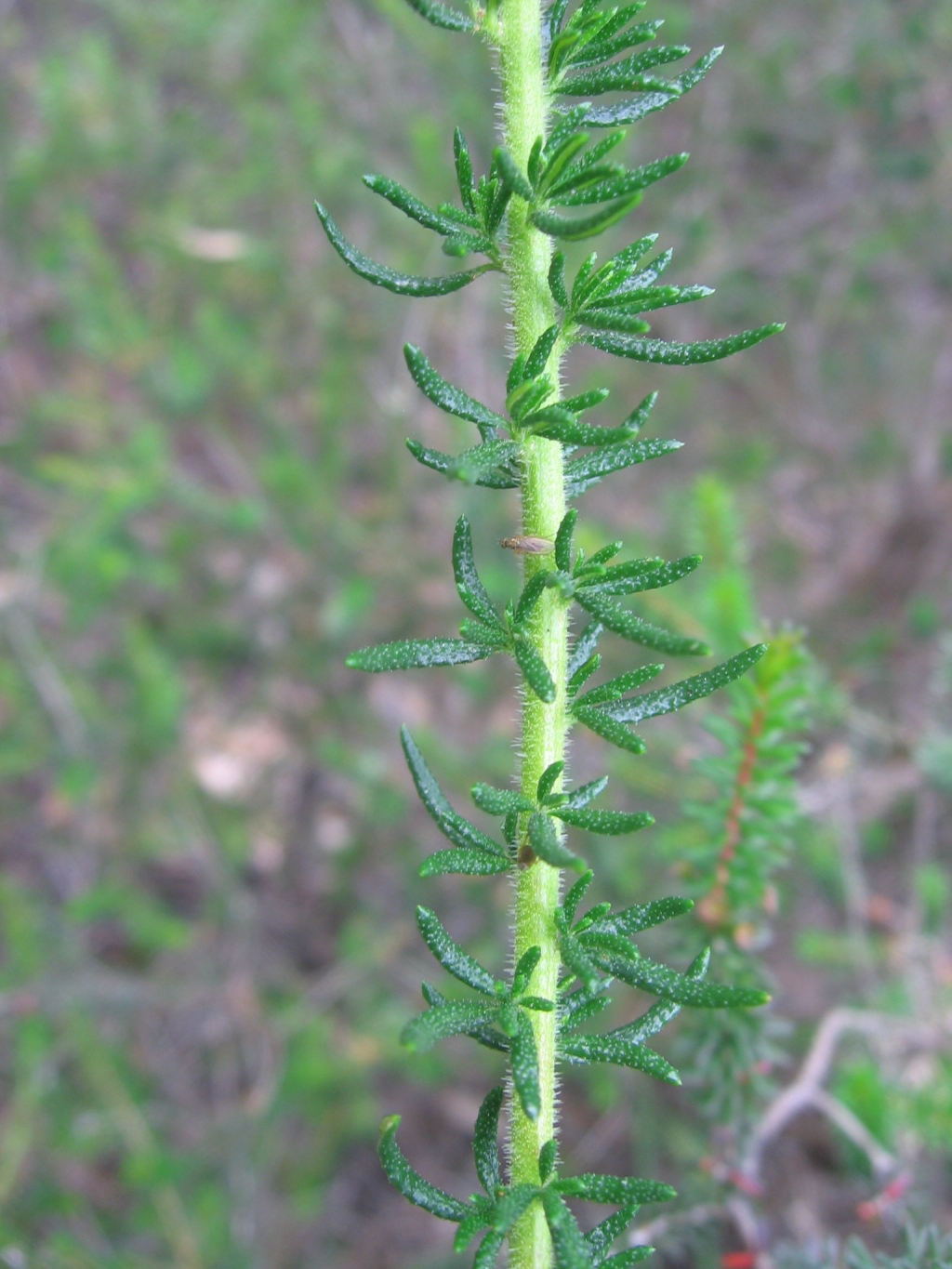Olearia ramulosa var. ramulosa
Branchlets with any combination of cottony hair, short to long setae (up to 1.5 mm long) and sessile glands. Leaves narrowly ovate to narrowly obovate or linear, 3–13 mm long, 0.5–2.5 mm wide; margins recurved to revolute; upper surface glabrous, scabrous, setose, sometimes with sparse cottony hair; lower surface cottony-pubescent, usually with sessile glands sometimes with a few setae along the mid-vein. Capitula axillary or terminal; bracts obtuse or acute, 2–6 mm long, glabrous, tomentose, sometimes setose or scabrid. Ray florets white or mauve. Flowers Oct.–Feb.
GleP, Brid, VVP, GipP, OtP, WaP, CVU, GGr, DunT, EGL, EGU, HSF, OtR, Strz, VAlp. Also SA, QLD, NSW, Tas. Common in near-coastal heaths and forests, often fringing watercourses or in gullies, also widespread through rocky ranges from the Grampians east to the New South Wales border (e.g. Mt Cole, Inglewood, Brisbane Ranges, Tyers, Mts Cobbler and Buffalo, catchments of the Buchan, Snowy, Cann and Genoa Rivers).
This taxon now includes plants previously treated in VicFlora (and elsewhere) as O. ramulosa var. stricta from drier inland sites, which have been distinguished by the predominantly setose hairs on stems which are often quite long (>0.5 mm long), more linear, recurved leaves, larger involucre, and occasionally mauve ligules (see note under O. ramulosa).
Walsh, N.G.; Lander, N.S. (1999). Olearia. In: Walsh, N.G.; Entwisle, T.J., Flora of Victoria Vol. 4, Cornaceae to Asteraceae, pp. 886–912. Inkata Press, Melbourne.
 Spinning
Spinning